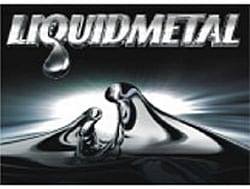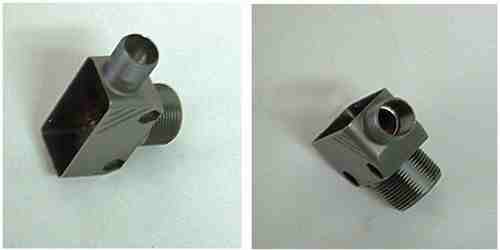Imagine a class of material with twice the strength of stainless steel, an elastic limit more than double that of most metallic alloys, and the ability to be processed like plastic and polymers. Calling it the “third revolution in manufacturing” Liquid Metal is the realization of decades of postulating about “glassy metals” – or Amorphous metals which do not form a crystalline structure. Rather, they maintain a random, amorphous structure (similar to glass) without the vacancies that would cause weakness, and without the characteristics that promote oxidation. Liquidmetal promises the ability to build products out of metal alloys that can also be easily cast into any number of forms. In case you were wondering, the first revolution was steel, and the second was plastics.
So glassy metals, like Liquidmetal, offer the highest possible strength, high hardness and wear resistance, and a superior strength-to-weight ratio. It also delivers an increased elastic limit (it can take a hit), resistance to corrosion, and exceptional damping and acoustic properties.
Sound too good to be true? It’s already being used, so barring any proprietary setbacks or other squandering of the technology (it is covered by several patents), it looks to play a big role in the future of many different products. Because of the astonishing properties of glassy metals, it is not surprising that the applications are extremely diverse. One of the first was in golf clubs, and another is in tennis racquets. Head has used Liquidmetal within its racquets to deliver a claimed 29 percent increase in power and a substantial expansion of the ‘sweet spot’. Further applications are either in production or being investigated in the fields of baseball and softball, skiing and snowboarding, cycling, knives, guns, scuba equipment, fishing tackle and boating.
According to a former steel and plastics industry executive and major investor in Liquidmetal, Apple Computer, well-known for its advanced manufacturing techniques, acquired the rights to use the technology earlier this month. Their first product to use the technology, possibly a trial run of early manufacturing techniques, was the SIM removal tool that shipped with the iPhone 3G.
All eyes are on the computer company right now, because their success will pave the way for other manufacturers to make use of the advanced Liquidmetal techniques. Apple will soon start experimenting with a new prototype injection molding machine which may allow the company to make advanced iPhone antennas and seamless gadget cases with holographic logos cast right into the metal.

While there is only one prototype of the machine used by Liquidmetal (located in Korea) to manufacture parts, additional machines are sure to be on order.
The Liquidmetal technology and process is impressive because it allows the creation of corrosive-resistant real-metal parts that would otherwise require the use of a CNC machine. These parts can be extremely complex, extremely small (or large), and can be made without seams and with tremendous cost-savings.
For tools, it brings up a myriad of ways in which the machining process could be simplified and more complex tool parts manufactured. In addition, we could see greater durability and more complex designs since the metal could be pressed or fed into virtually any shape desired. When plastic can be replaced as desired by metal, there are additional possibilities that open up.
When compared to steel and titanium, Liquidmetal also has the advantage of being a material with a high strain limit, so it can store and retrieve elastic energy. This makes it one of the best potential spring materials. It also makes it incredibly durable should it be subjected to shock or impact. Potential (and general coolness-factor) is high for this product so we’ll just have to wait and see which tool company reaches for it first.




